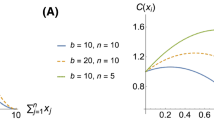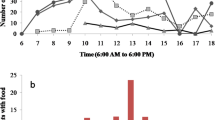Summary
We studied disturbance patterns in groups of feeding Argentine ants, Linepithema humile. All disturbances were caused by the ants themselves, without application of exogenous disturbances. The overall pattern, which consisted of a power law distribution of disturbance avalanche sizes, each of which was initiated by a single wandering ant, is similar to patterns characteristic of self-organized critical systems. In addition, we observed variation among individuals in response to disturbance according to their level of satiation. Ants with distended gasters (indicative of volume of food uptake) resumed feeding less rapidly than their thinner counterparts, and were more likely to leave food sources altogether. Although these disturbances reduce food collection because feeding ants are interrupted, they are minimal and may enable ant groups to balance collectively the advantage of rapid alarm communication with the costs of interrupted foraging from trivial disturbances.
Similar content being viewed by others
Author information
Authors and Affiliations
Corresponding author
Additional information
Received 18 September 2003; revised 21 November 2003; accepted 4 December 2003.
Rights and permissions
About this article
Cite this article
Halley, J.D., Burd, M. Nonequilibrium dynamics of social groups: insights from foraging Argentine ants. Insect. Soc. 51, 226–231 (2004). https://doi.org/10.1007/s00040-003-0725-x
Issue Date:
DOI: https://doi.org/10.1007/s00040-003-0725-x




